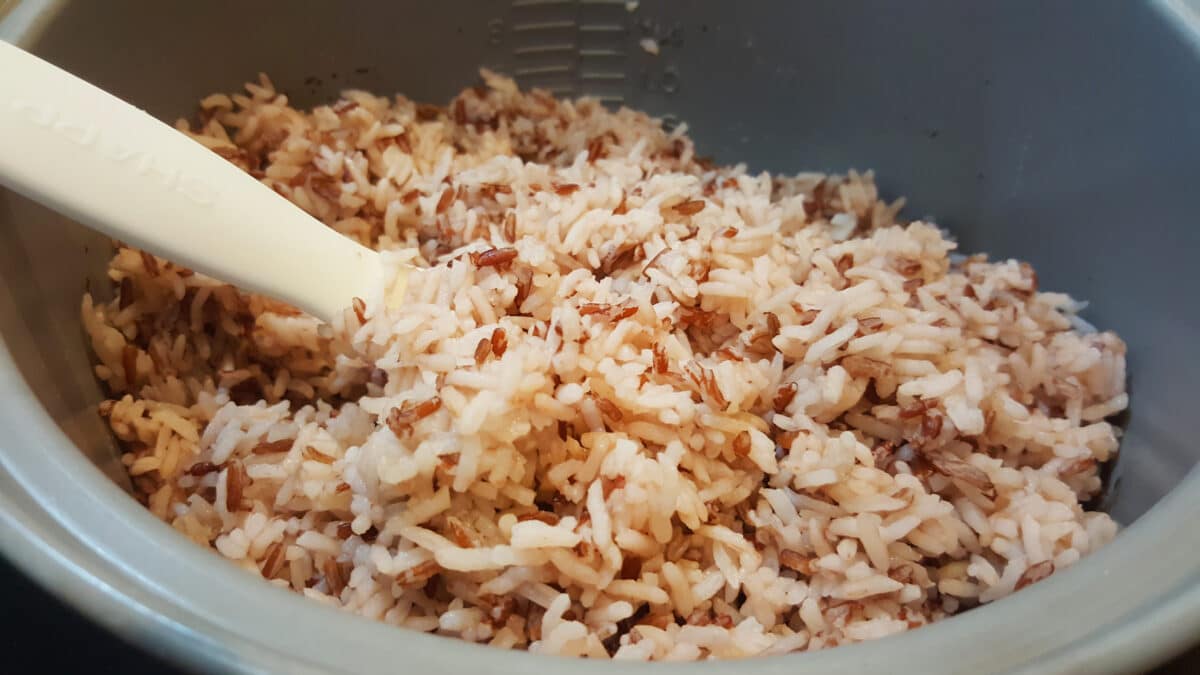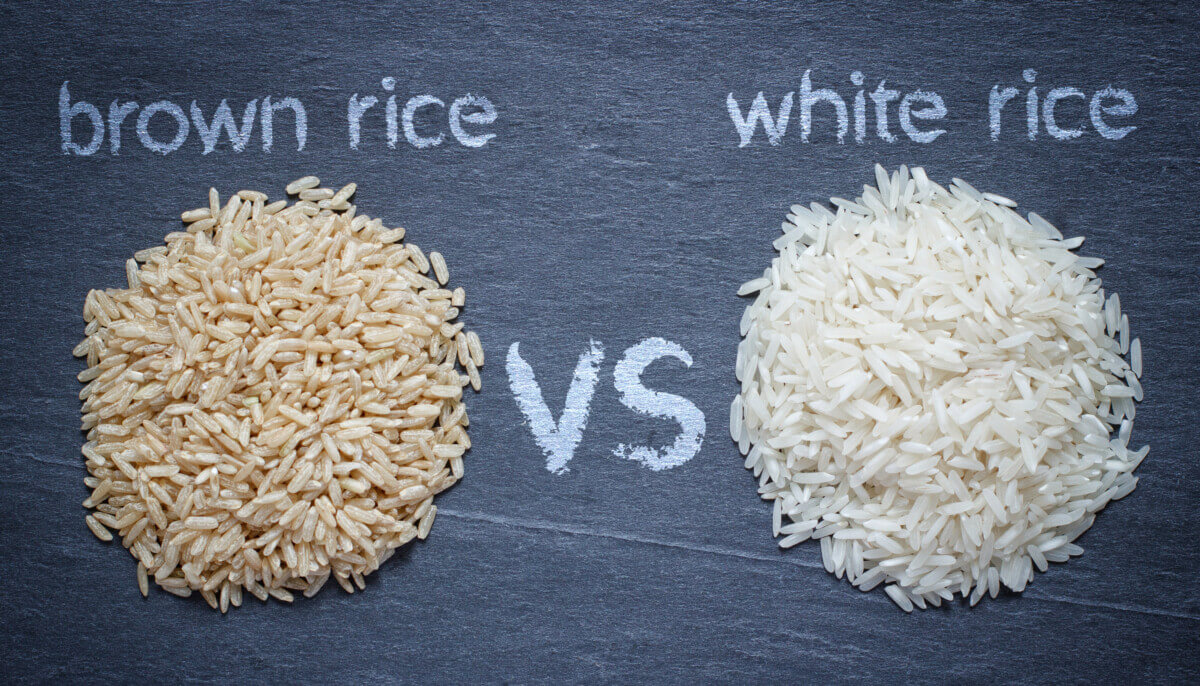
(Photo by THIPPTY on Shutterstock)
Researchers Say Findings Put Young Children In Particular At Risk
In a nutshell
- Brown rice contains approximately 40% more toxic inorganic arsenic than white rice because arsenic concentrates in the bran layer.
- Children under 5 years old, especially those aged 6-24 months, face the highest risk from arsenic in brown rice due to their higher food intake relative to body weight.
- For most adults, arsenic from rice consumption doesn’t pose significant health risks, but parents might consider balancing brown and white rice in young children’s diets.
EAST LANSING, Mich. — Many of us choose brown rice over white believing it’s the healthier option. With its extra fiber, vitamins, and nutrients preserved in the bran layer, brown rice has earned a reputation as a nutritional powerhouse. But concerning research reveals this “health food” may harbor a hidden danger—significantly higher levels of toxic arsenic than its white counterpart.
A new study from Michigan State University researchers, published in the journal Risk Analysis, highlights an uncomfortable truth: the very part of brown rice that makes it nutritionally superior—the bran—also concentrates dangerous inorganic arsenic, a known carcinogen.
“Rice bran and brown rice are shown to have a higher arsenic content and inorganic arsenic concentration than the grain endosperm or white rice,” the researchers warn in their findings. This elevated concentration occurs because arsenic from soil and water accumulates primarily in the outer layers of the rice grain—precisely the parts removed during processing to create white rice.
For adults, the arsenic exposure differences between brown and white rice likely won’t pose significant health risks, researchers say. But the study sounds a particular alarm about young children—especially those under age 5—who consume relatively more food per pound of body weight than adults.

Children ages 6-24 months who regularly consume brown rice showed particularly troubling exposure levels, with inorganic arsenic intake potentially exceeding safety thresholds previously established by international food safety authorities. The researchers calculated that some infants and toddlers consuming brown rice might ingest arsenic at levels of 0.295 micrograms per kilogram of body weight daily—exceeding the recommended safe limit of 0.21 micrograms.
Rice naturally absorbs more arsenic than most crops, taking up nearly 10 times more arsenic from soil than other grains. This happens because rice grows in flooded paddies, creating conditions where arsenic becomes more bioavailable. Once absorbed through the roots, arsenic concentrates in the outer layers of the rice grain.
Scientists have identified several forms of arsenic in rice, but inorganic arsenic poses the greatest concern. This form is classified as a Group 1 carcinogen by international health authorities and has been linked to various cancers, cardiovascular disease, and other serious health problems.
The researchers collected and analyzed data on rice consumption from the “What We Eat in America” database, which tracks the dietary patterns of a nationally representative sample of Americans. They then estimated arsenic exposure by combining this consumption data with arsenic concentration measurements from dozens of studies that directly compared arsenic levels in brown versus white rice.
Their analysis revealed that brown rice contained approximately 24% more total arsenic than white rice and about 40% more inorganic arsenic. Even more concerning, rice bran—the component that makes brown rice “brown”—contained arsenic concentrations roughly 10 times higher than the rice endosperm (the white interior portion).
“Our calculated mean arsenic level for US rice also falls within the suggested range of 0.1–0.46 µg/kg,” the researchers noted, confirming their findings align with previous research on arsenic in American rice.
In addition to children, other vulnerable groups showed higher risks from potential exposure. “Documented populations that are especially vulnerable to arsenic exposure from rice include infants and young children, along with Asian immigrant populations, people consuming a gluten-free diet, and those with diets that have a poor nutritional value,” the paper says.
The gap in arsenic exposure becomes most pronounced for young children who regularly eat brown rice. For example, children ages 6-24 months who ate brown rice had approximately twice the estimated arsenic exposure compared to those consuming white rice. The researchers noted that “consumption among the oldest age cohort declines compared to the average rice consumption,” suggesting arsenic exposure from rice becomes less concerning as we age.
The researchers aren’t calling for a brown rice ban. Rather, they suggest a more nuanced approach to dietary recommendations, particularly for parents and caregivers of young children. They argue that nutritional guidance should consider both the nutritional benefits and potential arsenic exposure risks.
“Our analysis shows that not only is this focus on nutritional content limited, but it also agrees with other studies that find elevated risks of arsenic exposure to children that potentially arise from the promotion of these more ‘health foods,'” the researchers write.
The findings challenge popular nutritional narratives that may oversimplify food choices into “good” versus “bad” options. The brown rice paradox—nutritionally superior yet potentially higher in toxic elements—highlights the complexity of food safety and nutrition science. For parents navigating feeding choices for young children, these findings suggest a balanced approach might include incorporating some white rice alongside brown rice to reduce potential arsenic exposure while still providing nutritional variety.
Ultimately, the study underscores that even our most health-conscious food choices can come with unexpected trade-offs, and that nutritional recommendations should evolve as our understanding of food safety continues to develop.
Paper Summary
Methodology
The researchers conducted a comprehensive literature review on the nutritional aspects of brown and white rice, then estimated arsenic exposure through rice consumption in the United States. They analyzed data from the “What We Eat in America” database compiled by the US Environmental Protection Agency and the Joint Institute of Food Science and Applied Nutrition, which provides information on rice consumption patterns among different age groups in America. Using mean rice intake values, they calculated the average daily dose (ADD) of arsenic exposure using a formula that considered arsenic levels in rice, daily rice consumption, and average body weight for different age cohorts. They compared arsenic exposure from white rice versus brown rice and examined exposure patterns across different age groups, with particular attention to children under 5 years old.
Results
The study found that brown rice contains approximately 24% more total arsenic and about 40% more inorganic arsenic than white rice. The rice bran (outer layer) contained significantly higher arsenic concentrations—up to 10 times more—than the endosperm (inner white portion). Children under 5 years old, especially those aged 6-24 months, had the highest relative exposure to arsenic from rice consumption due to their higher food intake relative to body weight. For some children consuming brown rice, the daily intake of inorganic arsenic potentially exceeded the previously recommended safe dose of 0.21 μg/kg body weight per day. Americans who regularly consume brown rice were found to have higher estimated arsenic exposures than those eating white rice. However, for most adult Americans, the daily arsenic exposure from rice consumption did not reach levels considered to pose significant public health risks.
Limitations
The researchers note several limitations to their study. The variance in outcomes when measuring arsenic content using different methods introduces potential measurement inconsistencies. The study was limited to sources that explicitly compared brown and white rice, potentially creating selection bias. Rice arsenic content varies tremendously depending on geographic location, growing conditions, rice variety, and post-harvest processing methods, making generalizations difficult. The consumer data may underestimate consumption patterns among certain ethnic groups with higher rice consumption, like Asian and Native American populations, as well as those following gluten-free diets.
Funding/Disclosures
The research was funded by the United States Department of Agriculture National Institute of Food and Agriculture (Grant numbers: 2023-67017-40049; MICL 02527). The authors declared no conflicts of interest.
Publication Information
The paper titled “Arsenic content and exposure in brown rice compared to white rice in the United States” was authored by Christian Kelly Scott and Felicia Wu from the Department of Food Science and Human Nutrition at Michigan State University. It was published in the journal Risk Analysis in 2025 as an open access article under the terms of the Creative Commons Attribution License.








Two points:
1) Brown Rice has a good dose of vitamin B1. White Rice is deficient.
2) EDTA is a supplement that gets rid of most of the arsenic, lead and cadmium in the body, with consistent use.